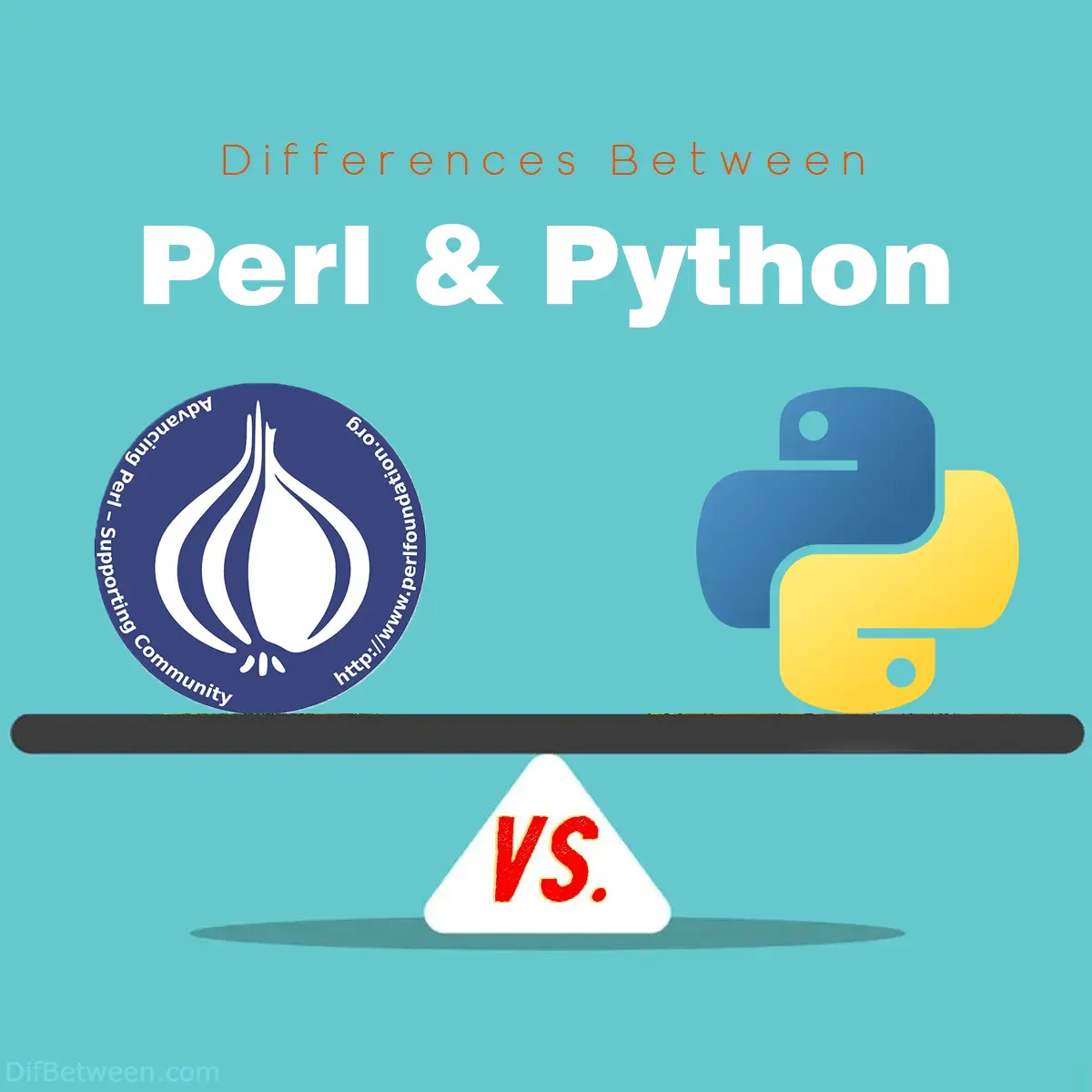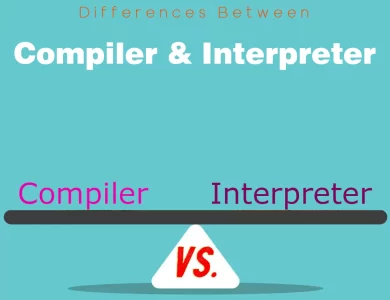
| Aspect | Perl | Python |
|---|---|---|
| Syntax and Readability | Concise but can be cryptic | Simple and highly readable |
| Language Popularity | Historically popular, declining | Continuously growing in popularity |
| Community Size | Smaller community | Large and diverse community |
| Use Cases and Domains | Strong in text processing, sys admin | Versatile, used in web dev, data science |
| Performance and Efficiency | Variable performance | Performance can be optimized |
| Object-Oriented Programming | Supported, but less central | Strong and central support for OOP |
| Library and Module Availability | Good standard library, CPAN | Extensive standard library, PyPI |
| Dependency Management | Can be complex | Simplified with pip, virtual environments |
| Community and Learning Resources | Available but less abundant | Abundant and diverse resources |
| Portability and Cross-Platform | Excellent cross-platform support | Good cross-platform support |
| Community and Industry Trends | Declining in popularity | Growing in popularity and demand |
| Job Opportunities | Fewer job opportunities | Abundant job opportunities |
| Emerging Technologies | Less prominent | Prominent in emerging tech fields |
When it comes to programming languages, Perl and Python are two formidable contenders. Both have their strengths and unique features, making them popular choices among developers. In this comprehensive guide, we will explore the key differences between Perl and Python. Whether you’re a seasoned coder looking to pick up a new language or a beginner trying to decide which one to learn, this comparison will help you make an informed decision.
Differences Between Perl and Python
The main differences between Perl and Python lie in their syntax and readability, where Perl tends to be more concise but can be cryptic to some, while Python is celebrated for its simplicity and readability, making it a favored choice for many. Another significant distinction is their community and industry trends; Python boasts a large and continuously growing community with abundant resources, while Perl, although historically popular, has seen a decline in popularity. Additionally, Python’s versatility and strong demand across various domains make it an attractive option for those seeking a versatile programming language, whereas Perl shines in text processing and system administration tasks.
Syntax and Readability
Perl:
Perl, often referred to as the “Swiss Army chainsaw” of scripting languages, is known for its concise and powerful syntax. It’s designed to make it easy for developers to write complex scripts quickly. However, this brevity can sometimes lead to code that is hard to read and understand, especially for those who are not familiar with Perl.
One distinctive feature of Perl is its use of special characters like ‘$’, ‘@’, and ‘%’, which indicate the data type of variables. This can make Perl code appear cryptic to newcomers. Additionally, Perl has a reputation for supporting multiple ways to do the same thing, which can lead to codebases with varying coding styles and standards.
Python:
Python, on the other hand, is renowned for its simplicity and readability. Its syntax emphasizes code clarity and a natural, almost English-like structure. Python code is known for its elegance and is often referred to as “executable pseudocode.” This readability makes Python an excellent choice for beginners and is one of the reasons it has gained widespread popularity.
Python’s use of indentation to define blocks of code is another unique feature. While some developers may find this restrictive, it enforces consistent code formatting across the entire Python ecosystem, leading to more readable and maintainable codebases.
| Aspect | Perl | Python |
|---|---|---|
| Syntax | Concise, can be cryptic | Simple and readable |
| Special Symbols | Extensive use of special chars | Minimal special characters |
| Coding Style | Multiple approaches | Strong emphasis on one best way |
In summary, Perl’s syntax is concise but can be challenging to read due to its extensive use of special characters and multiple coding approaches. Python, on the other hand, focuses on simplicity and readability, making it a more accessible choice for many developers.
Language Popularity and Community
Perl:
Perl has a long history and was once one of the most popular scripting languages on the web. It gained widespread use for tasks like text processing and server-side scripting. However, its popularity has declined in recent years, and it is no longer as prominent as it once was. Despite this decline, Perl still has a dedicated and active community of developers who maintain and update the language.
Python:
Python’s popularity has been on the rise for many years. It has become one of the most widely used programming languages, thanks in part to its simplicity and versatility. Python’s community is vast and diverse, with a wealth of resources, libraries, and frameworks available. This strong community support ensures that Python remains up-to-date and relevant in various fields, including web development, data science, machine learning, and more.
| Aspect | Perl | Python |
|---|---|---|
| Historical Popularity | Once very popular | Continuously rising in popularity |
| Community Size | Smaller community | Large and diverse community |
| Ecosystem | Limited libraries and frameworks | Extensive libraries and frameworks |
In terms of language popularity and community, Python clearly has the upper hand. Its widespread adoption and extensive community support make it an attractive choice for developers who want to be part of a thriving ecosystem.
Use Cases and Domains
Perl:
Perl was originally designed for text processing, making it a powerful tool for tasks such as parsing and manipulating large amounts of text or log files. It’s also commonly used for system administration tasks and as a glue language to connect different software components.
Python:
Python’s versatility makes it suitable for a wide range of applications. It excels in web development, data analysis, scientific computing, artificial intelligence, and machine learning. Python’s extensive standard library and third-party packages make it a top choice for developers working in these domains.
| Aspect | Perl | Python |
|---|---|---|
| Text Processing | Strong suit | Suitable, but not as focused |
| Web Development | Limited support | Extensive support and frameworks |
| Data Science | Limited capabilities | Dominant language in the field |
| AI & Machine Learning | Less commonly used | Widely used in AI and ML |
If your work primarily involves text processing or system administration tasks, Perl may be a suitable choice. However, for a broader range of applications, especially in areas like web development, data science, and AI, Python is the go-to language.
Performance and Efficiency
Perl:
Perl’s performance can be a subject of debate. It is an interpreted language, which means it might not be as fast as compiled languages like C or C++. However, Perl’s speed can vary depending on how well the code is optimized and the specific task it’s performing. It may not be the best choice for computationally intensive tasks.
Python:
Python is also an interpreted language, and like Perl, it may not be the fastest option for CPU-bound tasks. However, Python has ways to optimize performance. For example, libraries like NumPy and Cython allow developers to write high-performance code for scientific computing and data manipulation. Additionally, Python’s simplicity and readability can lead to faster development, which can compensate for its performance limitations in many cases.
| Aspect | Perl | Python |
|---|---|---|
| Execution Speed | Variable, not the fastest | Performance can be optimized |
| Development Speed | Quick development | Quick development due to readability |
| Optimized Libraries | Limited optimization options | Optimized libraries available |
In terms of performance, both Perl and Python are interpreted languages and may not be the fastest choices for CPU-intensive tasks. However, Python’s readability and availability of optimized libraries can make it more efficient for many development projects.
Object-Oriented Programming (OOP)
Perl:
Perl has support for object-oriented programming (OOP), but it is not as deeply integrated into the language as it is in Python. OOP features in Perl can sometimes feel like an add-on, and the syntax for defining classes and objects can be less intuitive for those familiar with other OOP languages.
Python:
Python is well-known for its strong support of object-oriented programming. It follows a clear and consistent syntax for defining classes and objects. In fact, Python is often used to teach OOP principles due to its simplicity in this regard. OOP is a fundamental part of Python’s design philosophy, making it a great choice for developers who want to work with OOP concepts.
| Aspect | Perl | Python |
|---|---|---|
| OOP Support | Supported but not central | Strong and central OOP support |
| Syntax Clarity | Less intuitive syntax | Clear and intuitive syntax |
| Teaching OOP | Less suitable for teaching | Often used for teaching OOP |
If you prioritize object-oriented programming in your projects or plan to learn OOP principles, Python’s clear and robust support for OOP makes it a more suitable choice.
Library and Module Availability
Perl:
Perl has a reasonably extensive standard library, but it may not cover as wide a range of domains as Python’s standard library. Perl relies heavily on the Comprehensive Perl Archive Network (CPAN), which provides thousands of modules for various tasks. CPAN is a valuable resource for Perl developers but can sometimes lead to challenges in managing dependencies.
Python:
Python boasts an extensive and well-organized standard library that covers a wide array of tasks. Additionally, the Python Package Index (PyPI) offers a vast collection of third-party libraries and modules that extend Python’s capabilities further. Python’s package management tools like pip make it relatively easy to manage dependencies and install packages.
| Aspect | Perl | Python |
|---|---|---|
| Standard Library | Good, but not as extensive | Extensive and well-organized |
| Third-party Modules | CPAN for additional modules | PyPI with a vast collection |
| Dependency Management | Can be complex | Simplified with pip and virtual environments |
Python’s wealth of libraries and the ease of managing dependencies make it a compelling choice for developers who want to access a broad range of tools and resources.
Community and Learning Resources
Perl:
While Perl has a dedicated community, it is smaller than Python’s community. Consequently, finding learning resources and getting help with Perl-related issues may be more challenging. However, there are still valuable Perl resources available, including books, forums, and online tutorials.
Python:
Python’s extensive community ensures that learning resources are abundant and readily accessible. There are countless tutorials, documentation, books, and online courses available for Python learners. Additionally, the Python community is known for being welcoming and supportive, making it easier for newcomers to get started.
| Aspect | Perl | Python |
|---|---|---|
| Community Size | Smaller community | Large and welcoming community |
| Learning Resources | Available but less abundant | Abundant and diverse resources |
| Supportive Community | Supportive but smaller | Highly supportive and inclusive |
For those who value a strong support network and a wealth of learning resources, Python’s larger and more welcoming community is a significant advantage.
Portability and Cross-Platform Compatibility
Perl:
Perl is known for its portability and cross-platform compatibility. Perl scripts can run on various operating systems without modification, making it an excellent choice for writing platform-independent code. This feature is particularly valuable in system administration and automation tasks.
Python:
Python also offers cross-platform compatibility, allowing developers to write code that works seamlessly across different operating systems. However, Python’s dependency management can sometimes lead to challenges when trying to ensure cross-platform compatibility for larger projects.
| Aspect | Perl | Python |
|---|---|---|
| Cross-Platform | Excellent cross-platform support | Good cross-platform support |
| Dependency Management | Simplified with CPAN | Dependency management can be complex |
Both Perl and Python offer good cross-platform compatibility, but Perl’s straightforward approach to dependency management can make it a preferred choice for some cross-platform projects.
Community and Industry Trends
Perl:
Perl has a long history and is still used in various domains, particularly in legacy systems and some specialized niches. However, its popularity has waned over the years, and it is not the first choice for many modern development projects. Perl’s job market may have fewer opportunities compared to Python.
Python:
Python is in high demand across various industries. Its growth is particularly notable in data science, machine learning, web development, and scientific computing. Python’s versatility and relevance in emerging technologies make it a valuable skill in today’s job market.
| Aspect | Perl | Python |
|---|---|---|
| Industry Trends | Declining in popularity | Growing in popularity and demand |
| Job Opportunities | Fewer job opportunities | Abundant job opportunities |
| Emerging Technologies | Less prominent | Prominent in emerging tech fields |
If you’re considering the long-term viability of a programming language in your career, Python’s strong industry demand and relevance in emerging technologies make it a compelling choice.
Perl or Python : Which One is Right Choose for You?
Choosing between Perl and Python depends on your specific needs and preferences. Let’s recap the key considerations to help you make an informed decision:
Choose Perl if:
- Text Processing: If your primary tasks involve heavy text processing, parsing, and manipulation, Perl’s powerful regular expressions and string handling capabilities make it an excellent choice.
- Legacy Systems: In cases where you’re working with legacy systems that rely on Perl scripts, familiarity with Perl can be valuable.
- System Administration: Perl’s history in system administration tasks and its portability make it suitable for automation and scripting in this domain.
- Quick Scripting: If you need to write quick scripts for small tasks, Perl’s concise syntax can allow you to get the job done rapidly.
Choose Python if:
- Readability Matters: Python’s simple and readable syntax, often described as “executable pseudocode,” is a significant advantage, especially for beginners and teams with diverse skill levels.
- Versatility: Python’s versatility makes it suitable for a wide range of applications, from web development to data science, machine learning, and scientific computing.
- Large Community and Resources: Python’s extensive community and abundant learning resources make it an attractive choice, particularly for those seeking support and guidance.
- Industry Demand: If you’re considering your career prospects, Python’s growing popularity and demand in various industries, including emerging technologies, make it a valuable skill.
- Cross-Platform Development: Python’s cross-platform compatibility, although slightly less streamlined in dependency management, allows you to write code that works seamlessly across different operating systems.
In summary, Perl remains a strong choice for specific use cases like text processing and system administration, while Python’s readability, versatility, and strong community support make it a compelling option for a broader range of applications and career opportunities. Ultimately, your choice should align with your project requirements and long-term goals.
FAQs
Perl is a high-level, interpreted programming language known for its text processing capabilities, system administration tasks, and general-purpose scripting. It was created by Larry Wall in 1987 and has a rich history in the world of programming.
Python is a versatile, high-level programming language known for its simplicity and readability. Guido van Rossum created Python in the late 1980s, and it has gained immense popularity across various domains, including web development, data science, and machine learning.
Some key differences include:
Syntax and Readability: Python is highly readable, while Perl can be concise but cryptic.
Community: Python has a larger and more active community.
Use Cases: Perl excels in text processing, while Python is versatile for web development, data science, and more.
Performance: Both languages are interpreted but can be optimized differently.
Object-Oriented Programming: Python has more robust support for OOP.
Library Availability: Python has a more extensive standard library and package ecosystem.
Learning Resources: Python offers more abundant learning resources and a welcoming community.
Python is often recommended for beginners due to its simple and readable syntax. It’s considered more beginner-friendly compared to Perl, which can have a steeper learning curve.
Use Perl when your project involves extensive text processing, system administration, or when working with legacy Perl code. Perl’s strengths lie in these areas.
Python is suitable for a wide range of applications, including web development, data analysis, machine learning, and scientific computing. Choose Python when versatility and readability are important.
Python is in higher demand in today’s job market due to its versatility and relevance in various industries, including emerging technologies like data science and machine learning.
Yes, it’s possible to use both languages in a project if they serve different purposes. For example, you can use Perl for text processing and Python for web development within the same project.
To install Perl, visit the official Perl website (perl.org) for instructions. For Python, you can download and install it from the official Python website (python.org).
Python is generally preferred for web development due to its extensive web frameworks like Django and Flask. While Perl can be used for web development, Python’s ecosystem is more robust and widely adopted in this domain.
Read More :





